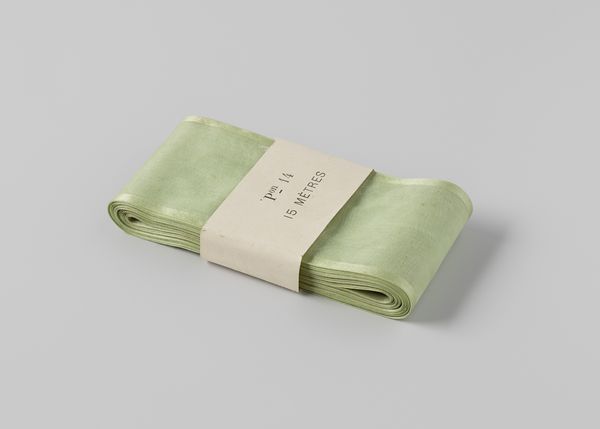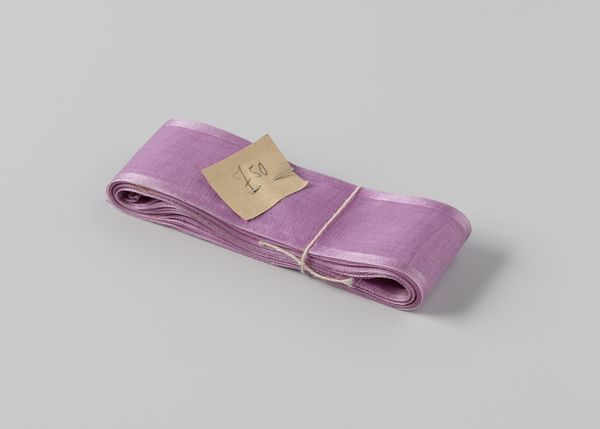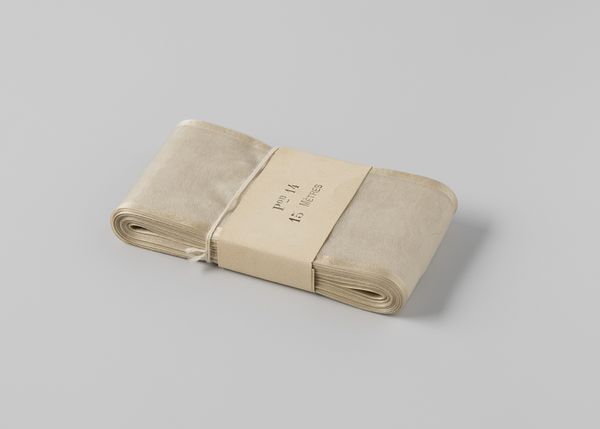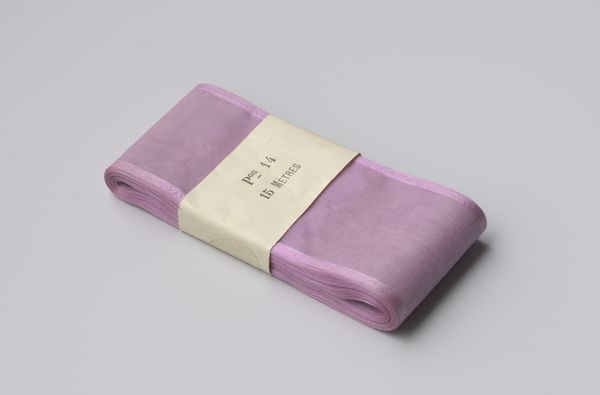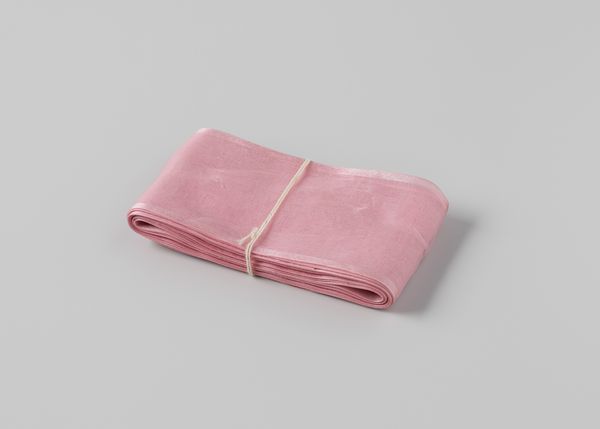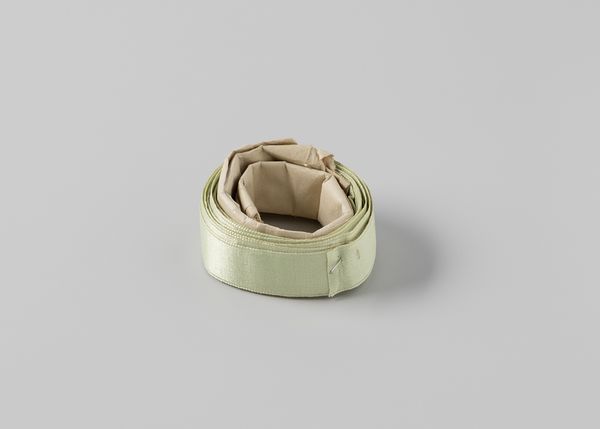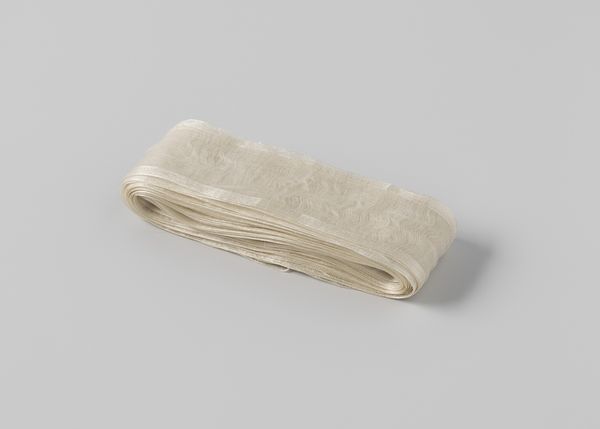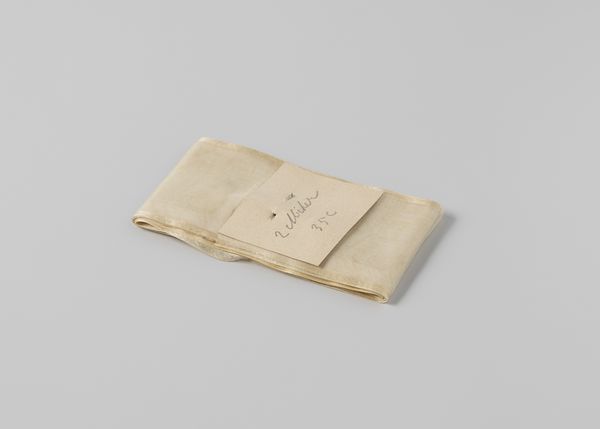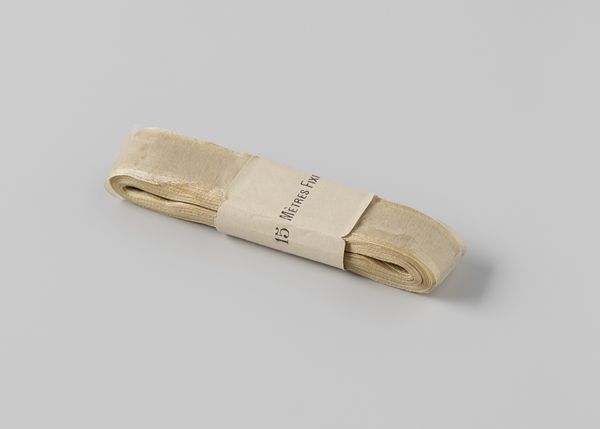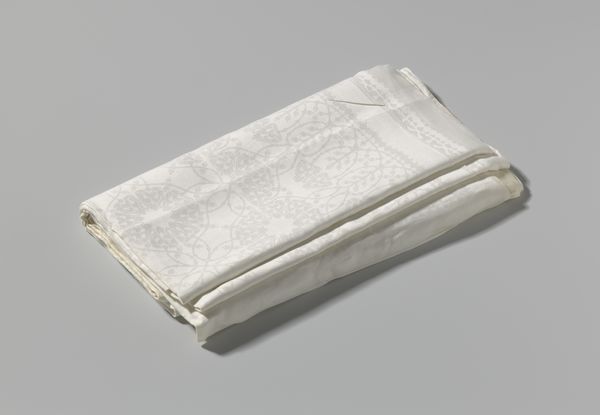
paper, photography
#
studio photography
#
product studio photography
#
still-life-photography
#
paper
#
photography
Dimensions: length 1500 cm, width 6 cm, height 2 cm, length 11.5 cm, width 6.5 cm
Copyright: Rijks Museum: Open Domain
Editor: This is "Lint van lichtgroen gaas" by Gustav Schnitzler, made sometime between 1900 and 1915. It’s a photograph of a roll of light green ribbon. It seems like an unusual subject for a photograph; almost like a commercial product shot, yet presented as art. What do you see in this piece, considering its historical context? Curator: That’s a keen observation. Indeed, still-life photography in this era walks a fascinating line between art and commerce. Photography was democratizing image creation, challenging established art hierarchies. Consider the social context: the rise of department stores, the burgeoning advertising industry. Schnitzler might be reflecting—or perhaps critiquing—this commercialization. Editor: So, you think this piece might be about more than just a ribbon? Is it trying to say something about the role of imagery at the time? Curator: Precisely. The very act of photographing this ribbon, presenting it within the aesthetic framework of a museum, elevates it, prompting questions about value, consumption, and the evolving role of photography in shaping perceptions. Also, the soft, diffused light romanticizes an everyday object. Does the writing on the packaging mean anything? Editor: I see "15 metres." Is this, perhaps, drawing attention to the process of commodification, stripping objects of their meaning beyond their physical measurement? Or is this actually for an advertisement of some sort? Curator: An advertisement within the context of an art museum! These readings could potentially overlap. Think about it; it might speak to our contemporary moment, too. Art reflecting consumerism feels extremely contemporary to me, too. This has really made me think about commercial photography's evolution. Editor: I see now; framing it through societal shifts reveals that an ostensibly straightforward piece of photography carries so much more complexity. Thank you.
Comments
No comments
Be the first to comment and join the conversation on the ultimate creative platform.
